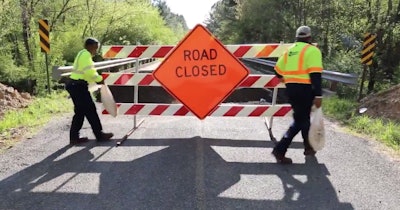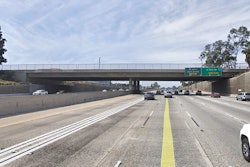 Mississippi DOT workers close a deficient bridge. Credit: MDOT
Mississippi DOT workers close a deficient bridge. Credit: MDOTOn June 4, Sen. Jeanne Shaheen (D-N.H.) announced the reintroduction of legislation, the Strengthen and Fortify Existing Bridges Act (SAFE Bridges Act), that would address more than 47,000 structurally deficient bridges in the United States.
The SAFE Bridges Act, which was co-sponsored by Senators Maggie Hassan (D-N.H.), Sheldon Whitehouse (D-R.I.), Bob Casey (D-Pa.), and Angus King (I-Maine), would establish a program to provide funding dedicated to repairing and replacing bridges in poor condition. Companion legislation was introduced in the House of Representatives by Congressman Jim Langevin (D-R.I.).
“My legislation would provide an overdue initial investment to repair our nation’s bridges, which will also help create jobs,” Senator Shaheen says in a press release. “Both the President and members of Congress from both parties have spoken about the need to rehabilitate our aging infrastructure — this bill presents an opportunity to begin to make good on that pledge. As bridges in New Hampshire and across the country continue to crumble from disrepair, the need for bipartisan cooperation has never been more urgent. Continued neglect poses significant public safety risks and jeopardizes our economy.”
“In New Hampshire and across the country, pedestrians and cars are traveling over bridges that have been weakened by age or overuse, which threatens public safety and hurts our economy,” Senator Hassan says in the press release. “I am pleased to join in reintroducing this important legislation to fund much-needed projects to rebuild — or in some cases replace — our aging bridges.”
The SAFE Bridges Act would authorize an additional $2.75 billion annually through 2025 to enable states to repair and replace bridges in poor condition, as well as maintain the surface coating and corrosion protection systems on eligible bridges. The bill uses a needs-based formula to provide states with funding levels according to their share of the nation’s deficient bridges.









